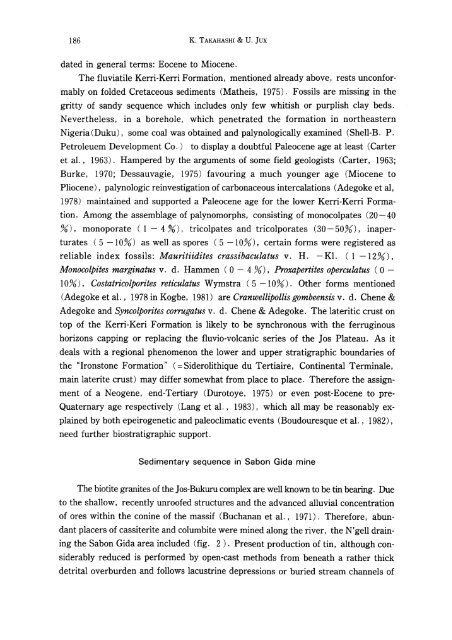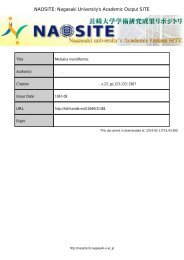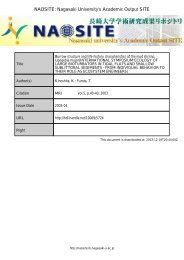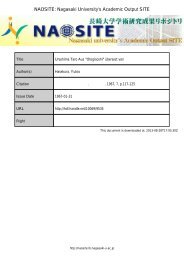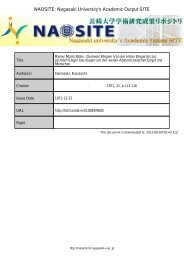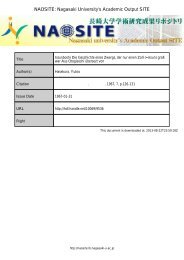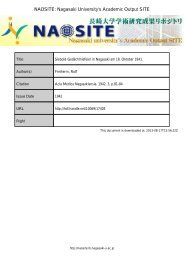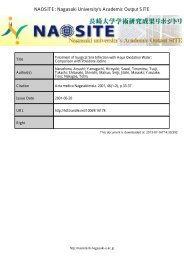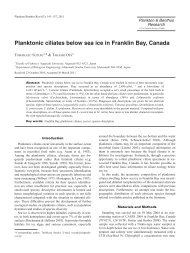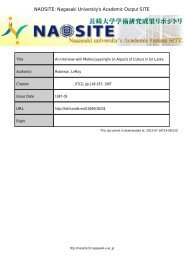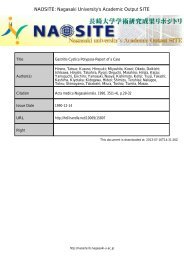Palynology of Middle Tertiary lacustrine deposits
Palynology of Middle Tertiary lacustrine deposits
Palynology of Middle Tertiary lacustrine deposits
You also want an ePaper? Increase the reach of your titles
YUMPU automatically turns print PDFs into web optimized ePapers that Google loves.
186 K. TAKAHASHI & U. lux<br />
dated in general terms: Eocene to Miocene.<br />
The fluviatile Kerri-Kerri Formation, mentioned already above, rests unconformably<br />
on folded Cretaceous sediments (Matheis, 1975). Fossils are missing in the<br />
gritty <strong>of</strong> sandy sequence which includes only few whitish or purplish clay beds.<br />
Nevertheless, in a borehole, which penetrated the formation in northeastern<br />
Nigeria (Duku), some coal was obtained and palynologically examined (Shell-B. P.<br />
Petroleuem Development Co.)<br />
to display a doubtful Paleocene age at least (Carter<br />
et al., 1963). Hampered by the arguments <strong>of</strong> some field geologists (Carter, 1963;<br />
Burke, 1970; Dessauvagie, 1975) favouring a much younger age (Miocene to<br />
Pliocene), palynologic reinvestigation <strong>of</strong> carbonaceous intercalations (Adegoke et al,<br />
1978) maintained and supported a Paleocene age for the lower Kerri-Kerri Formation.<br />
Among the assemblage <strong>of</strong> palynomorphs, consisting <strong>of</strong> monocolpates (20-40<br />
%), monoporate (1 - 4 %), tricolpates and tricolporates (30 - 50%), inaperturates<br />
(5 -10%) as well as spores (5 -10%), certain forms were registered as<br />
reliable index fossils: Mauritiidites crassibaculatus v. H. - Kl. (1 -12%),<br />
Monocolpites marginatus v. d. Hammen (0 - 4 %), Proxapertites operculatus (0 <br />
10%), Costatricolporites reticulatus Wymstra (5 -10%). Other forms mentioned<br />
(Adegoke et al., 1978 in Kogbe, 1981) are Cranwellipollis gombeensis v. d. Chene &<br />
Adegoke and Syncolporites corrugatus v. d. Chene & Adegoke. The lateritic crust on<br />
top <strong>of</strong> the Kerri-Keri Formation is likely to be synchronous with the ferruginous<br />
horizons capping or replacing the fluvio-volcanic series <strong>of</strong> the Jos Plateau. As it<br />
deals with a regional phenomenon the lower and upper stratigraphic boundaries <strong>of</strong><br />
the "Ironstone Formation" (=Siderolithique du Tertiaire, Continental Terminale,<br />
main laterite crust) may differ somewhat from place to place. Therefore the assignment<br />
<strong>of</strong> a Neogene, end-<strong>Tertiary</strong> (Durotoye, 1975) or even post-Eocene to pre<br />
Quaternary age respectively (Lang et al., 1983), which all may be reasonably explained<br />
by both epeirogenetic and paleoclimatic events (Boudouresque et al., 1982),<br />
need further biostratigraphic support.<br />
Sedimentary sequence in Sabon Gida mine<br />
The biotite granites <strong>of</strong> the Jos-Bukuru complex are well known to be tin bearing. Due<br />
to the shallow, recently unro<strong>of</strong>ed structures and the advanced alluvial concentration<br />
<strong>of</strong> ores within the conine <strong>of</strong> the massif (Buchanan et al., 1971). Therefore, abundant<br />
placers <strong>of</strong> cassiterite and columbite were mined along the river, the N'gell draining<br />
the Sabon Gida area included (fig. 2). Present production <strong>of</strong> tin, although considerably<br />
reduced is performed by open-cast methods from beneath a rather thick<br />
detrital overburden and follows <strong>lacustrine</strong> depressions or buried stream channels <strong>of</strong>


